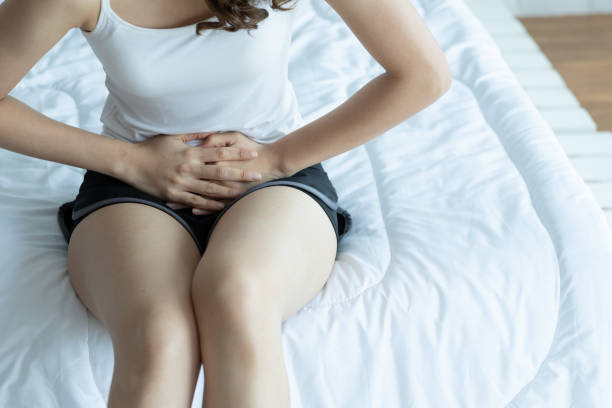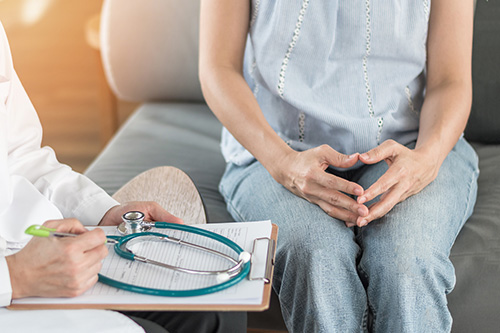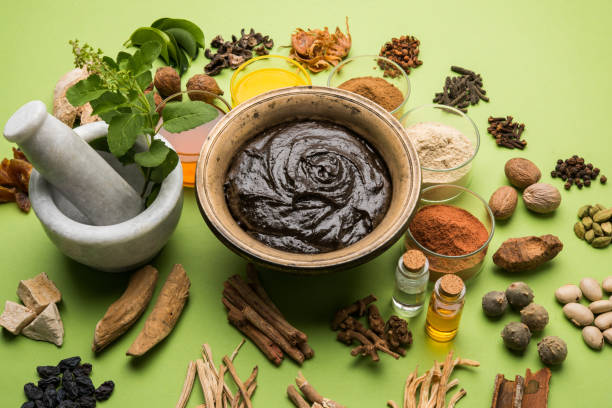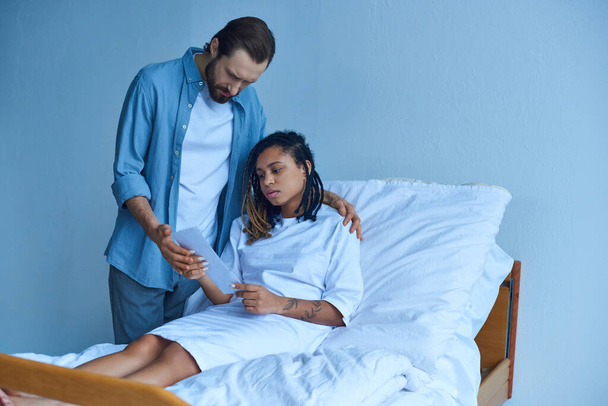
STDs are also sometimes referred to as sexually transmitted infections (STIs). Today in this article we will talk about what are the symptoms of STDs in women and how can they be recognized. Most of the STDs occurring in women do not show any specific symptoms, so when women have sexually transmitted diseases, they ignore it considering it as a normal problem, which can become a big problem later on. That’s why every woman should know these eight symptoms of STD. See these below…
Table of Contents
What are Sexually Transmitted Diseases or STDs?
The full form of STD is sexually transmitted disease. These are infections that are usually spread through sex, especially vaginal intercourse, anal sex, or oral sex. More than thirty different types of bacteria, viruses, and parasites can cause STIs.
STD Types:
Sexually transmitted diseases include:
- Chlamydia
- Chancroid
- Genital herpes
- Genital warts
- Hepatitis B
- HIV
- HPV (human papillomavirus)
- Trichomoniasis
- Syphilis
- Gonorrhea
- Pelvic Inflammatory Disease (PID)
(Also Read: How Does The Menstruation Cycle Works?)
Symptoms Of STD in Women:
No woman wants to suffer from STD but still, it is ignored by most of the girls. Here we are going to tell you about eight common symptoms of STD in women so that you can know whether you have STD or not.
Changes in Vaginal Discharge:
Generally, women have a white or transparent vaginal discharge and it is continuously secreted. But if there is a sudden change in vaginal discharge, i.e. yellow or greenish discharge with a strong odor, then you may have an STD.
Pain During Urination:
If you do not drink enough water, you may experience pain while urinating. But if you feel burning and pain during urination even after drinking more water, then you should get yourself checked immediately as it can be a symptom of STT infection in women.
Excessive Itching in Private Parts:
If you have extreme itching in your private parts all the time, then you might be suffering from STD like trichomoniasis. Because of this, it causes genital itching. If you are having excessive itching in the private parts, then you should get yourself checked immediately as it can be a symptom of STT in women.
Painless Wounds:
If you have a sore around your private parts or on your lips that is not painful, it is a symptom of syphilis. If you notice these symptoms in your body, you should immediately go to the doctor as there is a danger of syphilis bacteria spreading rapidly in the blood.
Red Rash All Over Your Body:
If you have red spots or rashes all over your body including palms and feet, it can be the next stage of syphilis, which can lead to cardiovascular and neurological problems. Therefore, if such symptoms appear, immediately go to the doctor.
Painful Physical Intercourse:
Relationships are not always pleasant for women. Especially if you or your partner has an STD problem. So if you have persistent and persistent pain during intercourse, you may have an STD infection.
Lower Pelvic Pain:
Pain is usually caused by an infection in the uterus or cervix. But if the pain starts suddenly at the bottom of the pelvis and is different from period pain, then you may have an STD infection.
Spotting:
If you notice blood stains on your underwear in between periods, you might actually have an STD. By identifying the symptoms of STD in women at the right time and getting them checked, they can be detected and it can be avoided by using the right method and protection. You can adapt STD prevention methods to avoid the problem of STDs.
(Also Read: Pelvic Inflammatory Disease | Risk | Treatment)
When to See a Doctor?
Although some STDs may not cause symptoms, it is important to watch for any signs of infection, even if they are minor. If you experience any of the following symptoms, see a doctor or healthcare professional immediately:
Urinary incontinence Abnormal discharge from the cervix, penis, or anus Genital itching or burning Rashes, pimples, and sores Pelvic discomfort, often referred to as lower abdominal pain Abnormal vaginal bleeding Painful penetrative sex
How are STDs Treated?
In the recent past, the cases of STDs i.e. sexually transmitted diseases have increased. Do you know that STDs are more dangerous for women than men? It is argued that STDs are the biggest cause of infertility in women. So, let’s know how STDs are treated…
(Also Read: Keep Your Intimate Area Hygienic With V Wash)
Chlamydia:
Individuals with chlamydia should abstain from sex for seven days following a single dose of antibiotics or until the seven-day course of antibiotics is completed.
Genital Herpes:
It cannot be cured but can be controlled with medicines.
HPV:
It cannot be cured but can be prevented with vaccines and controlled with medicines.
Syphilis:
If recognized at an early stage, it can be treated with a single injection of antibiotic, usually within a year of infection. If it cannot be identified in the early stages, syphilis may require long-term treatment with antibiotics.
Trichomoniasis:
This can be treated with a single dose of antibiotics, usually either metronidazole or tinidazole, taken by mouth.
Hepatitis B:
This can be treated with antiviral drugs and prevented by vaccination.
Gonorrhea:
This can be treated with antibiotics.
HIV/AIDS:
People who may be at higher risk of HIV infection can receive HIV pre-exposure prophylaxis, or PrEP, which includes an HIV drug known as Truvada and is used to prevent HIV. Should be taken continuously. AIDS can be prevented by starting antiretroviral therapy in people with HIV.
Some of these diseases can be treated with antibiotics such as azithromycin, cefixime, and metronidazole. Treatment can reduce the symptoms and progression of most of these infections.
(Also Read: Home Remedies For Itchy Vagina)
Are There Any Side Effects of STD Treatment?
Medicines for the treatment or control of sexually transmitted diseases may have some side effects such as allergic reactions, skin itching, redness, and swelling. Certain types of germs can also lead to the development of cancer. Some viral infections such as hepatitis B and HIV can cause severe illness and may even result in death. Medicines for chlamydia can cause nausea and vomiting, abdominal pain or cramps, vaginal itching, or discharge.
After treatment with antibiotics, a patient with syphilis may experience fever, headache, joint or muscle pain, nausea, and chills. The side effects of HIV medicine are- hypersensitivity reaction, anemia, diarrhea, abdominal pain, neuropathy, rash, insomnia, fatigue, loss of appetite, etc. Similarly, for other STDs many other medicines can have side effects.
What are The Guidelines After Treatment For Sexually Transmitted Diseases?
Patients should continue with the course of the drug even if the symptoms go away during the course of treatment. The doctor will usually order blood tests to make sure that the patient is responding to the drugs given to him. If needed, the sex partner should also be tested.
It is suggested to avoid unprotected sex and use condoms during intercourse as there is a chance for the person to get re-infected with the disease. For some infections, regular testing for sexually transmitted diseases is recommended.
(Also Read: Myths About Tampons: How To Use Tampons And It’s Advantages)
What are the Home Remedies for Treating STDs?
- Echinacea is highly appreciated as this herb is used to treat many infections including STDs as it boosts the immune system and stimulates hormone secretion in the body.
- Garlic can prevent the risk of STDs as garlic has antiviral and germ-killing power which can effectively cleanse the entire system.
- Yogurt is very famous for its natural probiotics which makes it ideal for fighting infections throughout the body.
- Probiotics can help in the growth of good bacteria in the body.
- Lemon juice which through its astringent properties can reduce the pain associated with STDs, lemon balm, aloe vera gel, neem leaves, milk thistle, cranberry juice, tea tree oil, etc.
FAQ:
Q. How to Diagnose STD?
A. There are many home test kits available to test you if you experience any symptoms of an STD. Don’t just rely on them as they may not always be reliable.
Regular screening with Pap smear tests can prevent or detect most cases of early-stage HPV that lead to cervical cancer. Always remember to get tested for STDs at a doctor’s clinic or hospital. Don’t just rely on home testing kits.
Q. Can you get an STD from a toilet seat?
A. STDs are usually transmitted during sexual activity. It can be transmitted during oral, vaginal, anal sex, and close skin-to-skin contact. The chances of transmission of STDs are bleak in the absence of sexual activity. However, transmission could theoretically occur.
Q. Can STDs be cured completely?
A. STD can be caused by bacteria or viruses. If bacteria are the causative agent, they can be treated with antibiotics if started in the early stages of the disease. STDs caused by viruses can only be managed to provide symptomatic relief. A vaccine against hepatitis B is available but it can protect against hepatitis B only if given well before infection.
Q. Can STDs be cured?
A. Many STDs can be cured with antibiotics or other treatments:
- Trichomoniasis
- Syphilis
- Gonorrhea
- Chlamydia
Q. Which STD is not curable?
A. Some STDs cannot be cured but can still be managed with treatment.
- HPV
- Genital Herpes
- H.I.V.
(Also Read: Can You Get Pregnant While Having Sex On Your Period?)
Q. How long does it take for an STD to go away?
A. STDs caused by bacteria such as chlamydia usually require two weeks of treatment if treatment is started early in the course of the illness. STDs caused by viruses such as HIV, hepatitis, herpes, human papillomavirus, and cytomegalovirus can only be managed symptomatically, although they will persist for life.
Q. Which STD stays with you for life?
A. Sexually transmitted diseases can be caused by bacterial, fungal, or viral infections. Nowadays, most of the STDs are curable but there are still some of them which are not curable and remain for life. Those STDs include HIV syndrome, hepatitis B, genital herpes, human papillomavirus infection, and cytomegalovirus infection.
Conclusion:
Sexually transmitted infections and diseases are very common in today’s world. It is very important that these conditions are diagnosed at an early stage so that proper treatment can be given to such patients. You should always make sure that you get your tests done if you suspect that you have been exposed to a bacterial or viral infection or if you notice any of the symptoms mentioned above. Prevention is better than cure so it is always advised that you practice safe sex and avoid sexual contact with multiple partners as it increases the risk of developing sexually transmitted diseases.












Leave a Comment